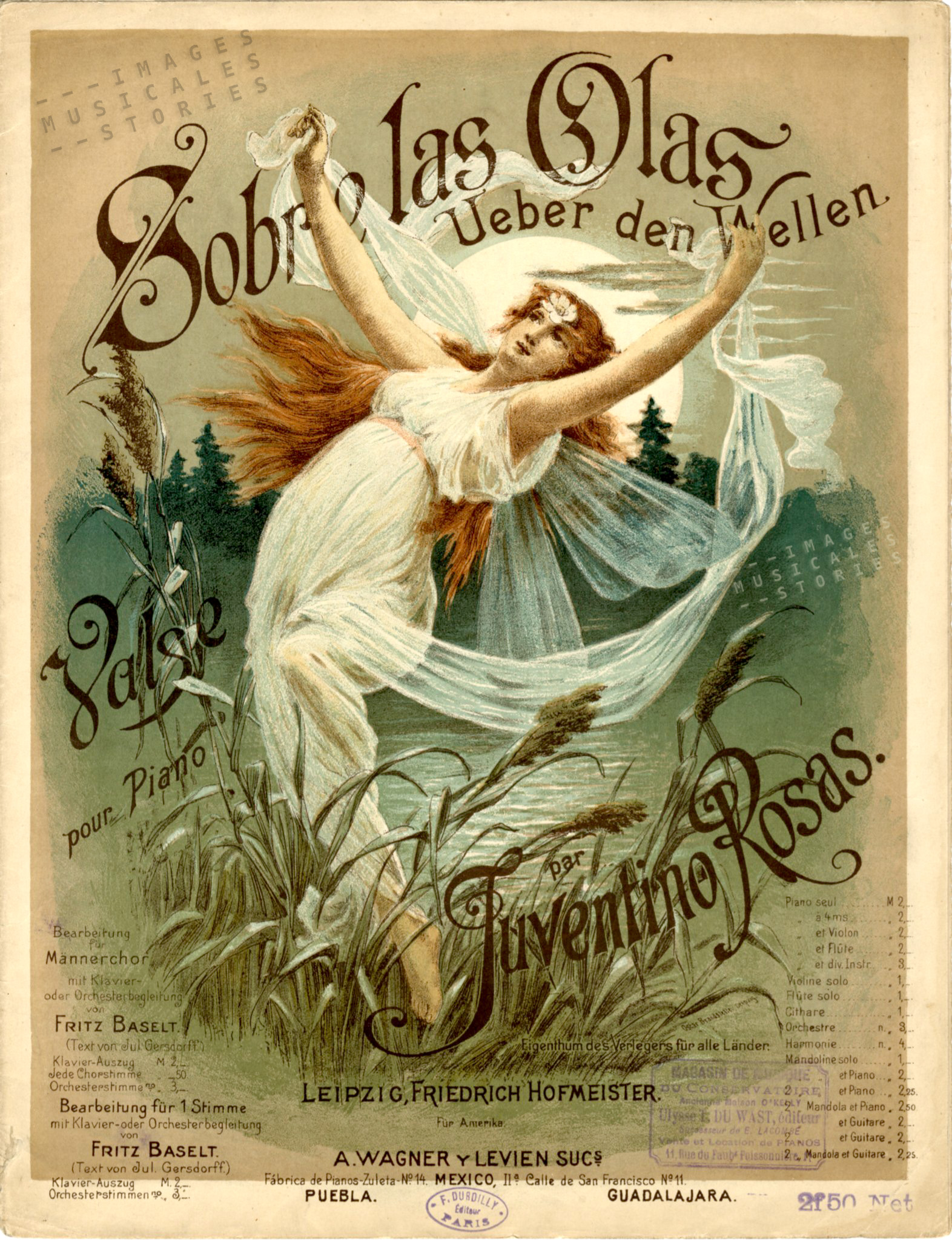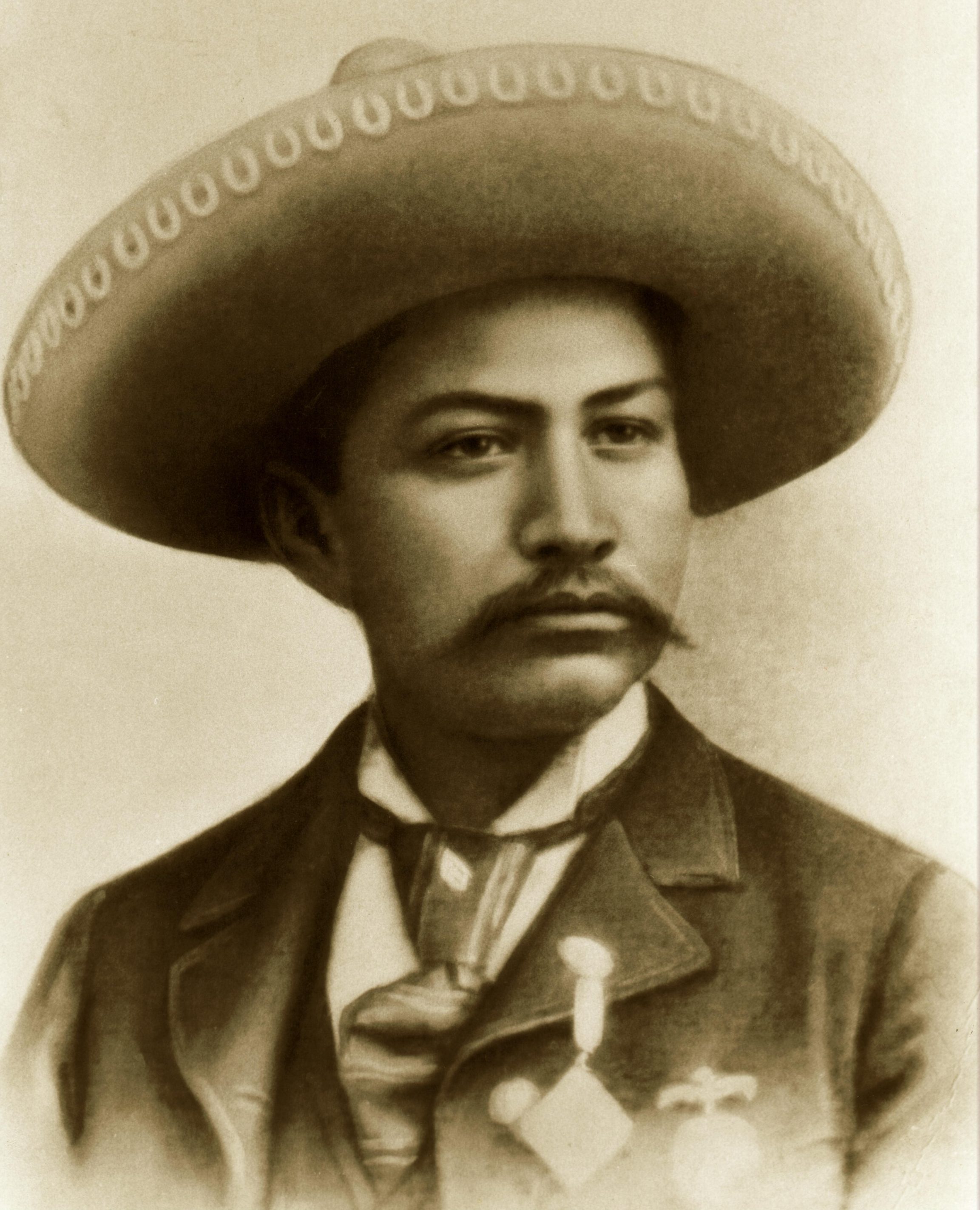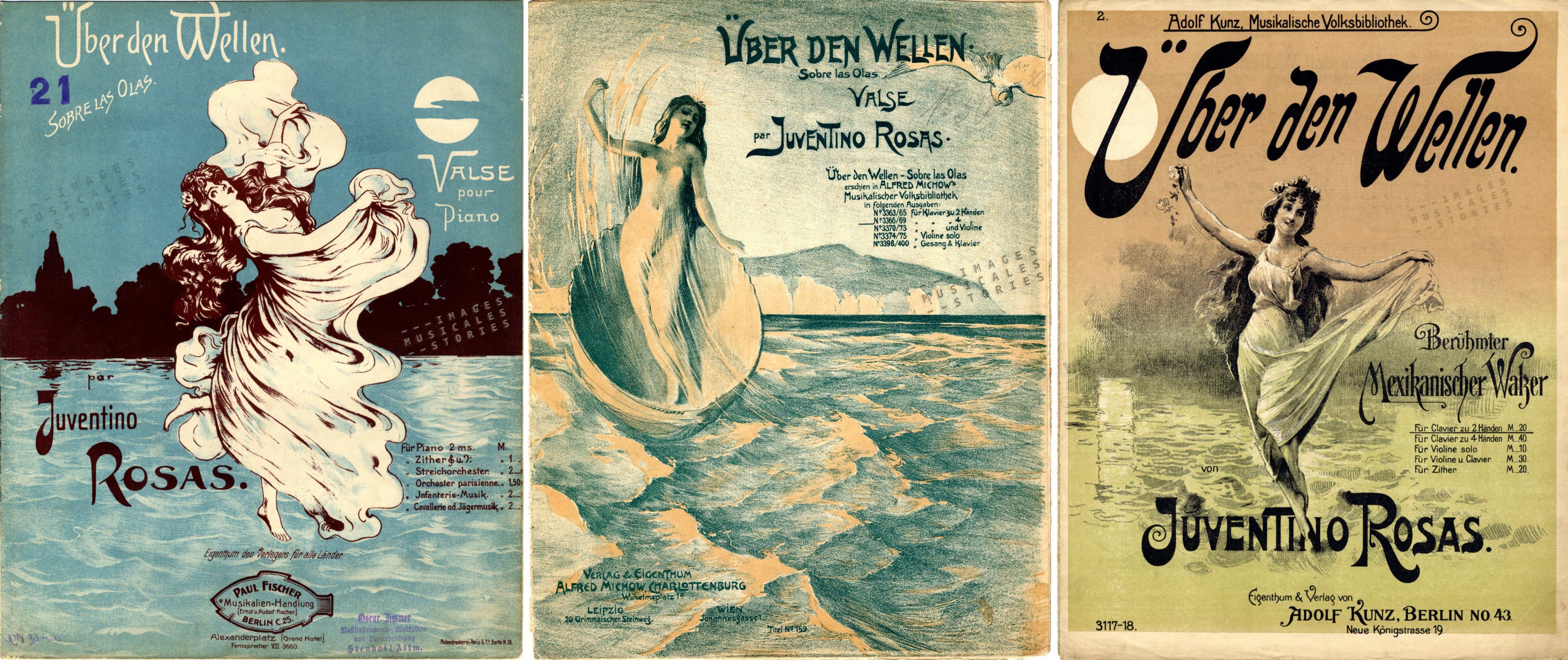
It is not our collector’s goal, but we have many duplicates of the sheet music ‘Over the Waves’ (Sobre las Olas in Spanish, Über den Wellen in German, Sur les Vagues in French, Sopra le Onde in Italian).
Not surprisingly the waltz, Sobre las olas, has sometimes been incorrectly attributed to Johann Strauss. But is was composed by a Mexican, Juventino Rosas (1868-1894). His life has been documented and filmed. Beware though, because many lies and fantasies have been written about him. What is true —and sad— is that he died too young at the age of 26.

We want to concentrate on the iconic representation of Sobre las Olas on all the above covers. Where does it come from? Why did the music publishers all over Europe apparently follow the convention to represent a young nymph, fairy or woman floating above foaming water, always with bare arms, twirling and undulating, wrapped in lots of light fabric? Send us a postcard if you know the answer, please.
At that time Art Nouveau is in full bloom, and the flowing gowns echo the characteristic whiplash curves employed by many fin-de-siècle artists.

What strikes us, is the graphical similarity with the representation of the famous Serpentine Dance created by Loïe Fuller at the Folies Bergère, as seen on posters around 1900.

Of course, seeing Loïe Fuller in action is another thing. Here she is, metamorphosing from a bat, in an original silent film by Segundo de Chomon. He was a brilliant Spanish film pioneer who worked in Paris and is often compared to Georges Méliès, due to his frequent camera tricks and optical illusions. The film is from 1902 (and not 1905 as indicated on YouTube). Although Segundo de Chomon hand painted some copies, this one is recently stencil-coloured.
In another Segundo de Chomon film The creation of the Serpentine (1908) Mephistopheles interrupts a peaceful evening of dancing in a French salon. Showing his real face, the demon creates a woman who multiplies in numerous Serpentine dancers, all twisting their robes until they finally explode into flames. Wow!
And here is an excerpt from La Danseuse a 2017 biopic of Loïe Fuller, played and danced by none other than I’ll Kill Her Soko. Perhaps not really a must-see, but it gives a good impression of the colour effects that were originally used and designed by Fuller herself.
Now back to our Sobre las Olas with an Uzbek interpretation. It surely beats kittens on Facebook.



